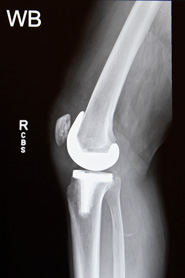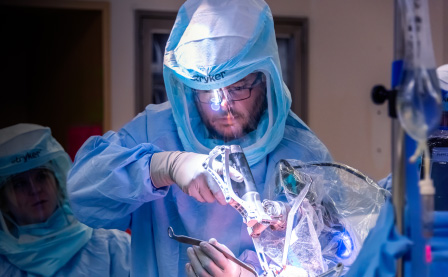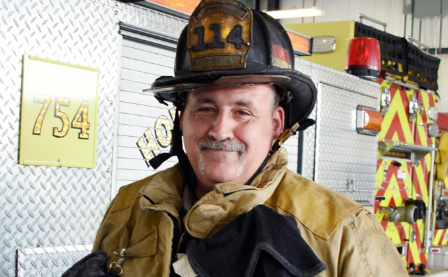


What We Do
Select a category below to learn more.
Total Knee Replacement
A knee replacement is a very effective treatment for many patients with arthritis, which is one of the most common causes of knee pain in adults and can lead to poor mobility.

Patients may be candidates for knee replacement surgery if they experience knee pain that keeps them awake at night, sidelines them from activities, or limits daily functions such as climbing stairs.
If conservative treatment of chronic knee pain is no longer working, including non-steroidal anti-inflammatory drugs such as Motrin or Aleve, steroid injections into the joint, physical therapy, weight loss or nutritional supplements, then it may be time to consider a knee replacement.
Knee replacement surgery involves removing the damaged cartilage and abnormal bone and replacing all or part of the knee joint with an artificial joint. After surgery, physical therapy is often ordered to help restore the strength and range of motion of the knee. Most individuals are back to their everyday activities within two to three months after surgery, but recovery depends on many factors such as age, weight, and activity level prior to surgery.
Robotics
Robotic-assisted knee surgery, a form of minimally invasive surgery, allows the surgeon to perform many types of complex procedures with more precision, flexibility and control than is possible with traditional techniques. With robotic-assisted knee replacement surgery, the surgeon directly maneuvers the robot’s every move while at the bedside using real-time feedback to continuously adjust the robot during the procedure. This advanced technology provides many benefits to the patient, including a precise and personalized fit, leading to a greater range of motion, less pain and a faster recovery than with traditional joint replacement surgery.

OTHER KNEE CONDITIONS
- ACL, Meniscus, PCL tears
- Arthritis and Osteoarthritis
- Sports-related Injuries
- Fractures and Sprains
- Pain and Swelling
Patient Success Stories

In the early 1990’s, Marine Veteran Chris Dubose suffered a horrific car accident that required reconstruction of his right knee. Committed to caring for others, Chris’ career spanned from serving his country in the military to rescuing people from fires as a First Responder. However, the impact of his initial knee injury, coupled with years of physically demanding work, left Chris in need of a total knee replacement. To read more about Chris’ surgical experience and return to service, click here.
OUR SPECIALISTS
-
McLEOD REGIONAL MEDICAL CENTER FLORENCE
843-777-2000 -
McLEOD DARLINGTON
843-777-1100 -
McLEOD DILLON
843-774-4111 -
McLEOD LORIS
843-716-7000 -
McLEOD SEACOAST
843-390-8100 -
McLEOD CHERAW
843-537-7881 -
McLEOD CLARENDON
803-433-3000



-
McLEOD REGIONAL MEDICAL CENTER FLORENCE
843-777-2000 -
McLEOD DARLINGTON
843-777-1100 -
McLEOD DILLON
843-774-4111 -
McLEOD LORIS
843-716-7000 -
McLEOD SEACOAST
843-390-8100 -
McLEOD CHERAW
843-537-7881 -
McLEOD CLARENDON
803-433-3000